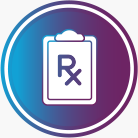
|
| This is a sponsored message from e-M.D./alert on behalf of Genentech USA, Inc. and Novartis Pharmaceuticals Corporation. e-M.D./alert provides information and education programs direct to healthcare professionals. The following material is intended specifically and exclusively for US healthcare professionals. You are receiving this email because you previously registered to receive information from this service.
|
| Please see Important Safety Information below.
|

|
| This is a sponsored message from e-M.D./alert on behalf of Genentech USA, Inc. and Novartis Pharmaceuticals Corporation. e-M.D./alert provides information and education programs direct to healthcare professionals. The following material is intended specifically and exclusively for US healthcare professionals. You are receiving this email because you previously registered to receive information from this service.
|
| Please see Important Safety Information below.
|
|
|
|
|
|
|
|
| Explore the resources available to help eligible patients start and stay on their prescribed XOLAIR
|
|
|
|
| INDICATION
|
| XOLAIR® (omalizumab) is indicated for adults and pediatric patients 6 years of age and older with moderate to severe persistent asthma who have a positive skin test or in vitro reactivity to a perennial aeroallergen and whose symptoms are inadequately controlled with inhaled corticosteroids.
|
| Limitations of Use: XOLAIR is not indicated for the relief of acute bronchospasm, status asthmaticus, or for treatment of other allergic conditions.
|
| IMPORTANT SAFETY INFORMATION
|
| WARNING: Anaphylaxis |
| Anaphylaxis presenting as bronchospasm, hypotension, syncope, urticaria, and/or angioedema of the throat or tongue, has been reported to occur after administration of XOLAIR. Anaphylaxis has occurred as early as after the first dose of XOLAIR, but also has occurred beyond 1 year after beginning regularly administered treatment. Because of the risk of anaphylaxis, initiate XOLAIR therapy in a healthcare setting and closely observe patients for an appropriate period of time after XOLAIR administration. Health care providers administering XOLAIR should be prepared to manage anaphylaxis which can be life-threatening. Inform patients of the signs and symptoms of anaphylaxis and instruct them to seek immediate medical care should symptoms occur. Selection of patients for self-administration of XOLAIR should be based on criteria to mitigate risk from anaphylaxis. |
|
|
XOLAIR for allergic asthma
has extensive coverage with first-line biologic access
across the majority of commercial plans1
|
|

|
| For patients who need more information along their XOLAIR treatment journey, Support For You provides:
|
| • |
1:1 education sessions with a Clinical Education Manager* trained to provide information on XOLAIR and support programs available
|
| • |
A step-by-step guide to getting started on XOLAIR and relevant information about treatment
|
|
|
|
|

|
| For eligible commercially insured patients, the XOLAIR Co-pay Program† may help them pay as little as:
|
| • |
$5 for XOLAIR drug out-of-pocket (OOP) costs up to $15,000 per calendar year
|
| • |
$5 for XOLAIR administration OOP costs up to $1,500 per calendar year
|
|
| Terms and conditions apply. The final amount owed by patients may be as little as $5, but may vary depending on the patient's health insurance plan.
|
|
|
|

|
| For eligible patients who need financial assistance, options may be available:
|
| • |
We can refer patients to independent co-pay assistance foundations‡ to help publicly or commercially insured patients with their out-of-pocket costs
|
| • |
The Genentech Patient Foundation§ provides free medicine to patients who don’t have health insurance coverage or who have financial concerns and meet eligibility criteria
|
|
|
|
|

|
| For helpful coverage information, XOLAIR Access Solutions is here to help:
|
| • |
XOLAIR Access Solutions provides benefits investigations and resources for prior authorizations, denials and appeals to support your patients
|
| • |
Work with us online when it is convenient for you using My Patient Solutions® for Health Care Practices
|
|
|
|
|

|
| For patients who need help getting started on XOLAIR:
|
| • |
The XOLAIR Sample Program may help your new, clinically appropriate patients become familiar with XOLAIR
|
| • |
With the XOLAIR Starter Program,ǁ eligible patients taking XOLAIR may receive free medicine while awaiting a health insurance coverage determination
|
|
| Restrictions apply for the XOLAIR Sample Program. Speak with your representative for more information.
|
|
|
|
| Please scroll below for additional Important Safety Information.
|
| * |
Clinical Education Managers are Genentech employees who educate about XOLAIR. They do not provide medical advice to patients. If patients have questions about their health or treatment, they are encouraged to contact their healthcare provider.
|
| † |
The XOLAIR Product and Administrative Co-pay Program is valid ONLY for patients with commercial insurance who have a valid prescription for a Food and Drug Administration (FDA)-approved indication of a Genentech medication. Patients using Medicare, Medicaid or any other federal or state government program to pay for their medications are not eligible. To receive co-pay assistance for both drug cost and administration fees, patients must apply for and be enrolled in each type of program benefit, (i.e., drug cost and administration fees).
|
|
Under the programs, the patient will pay a co-pay for drug costs and a co-pay for administration costs. After reaching the maximum per treatment or annual limit, the patient will be responsible for all remaining out-of-pocket expenses. The amount of the program’s benefits cannot exceed the patient’s out-of-pocket expenses for the cost of the drug or administration fees associated with the XOLAIR.
|
|
All participants are responsible for reporting the receipt of all program benefits as required by any insurer or by law. The programs are only valid in the United States and U.S. Territories.
|
|
These programs are void where prohibited by law. The product co-pay program shall follow state restrictions in relation to AB-rated generic equivalents (e.g., MA, CA) where applicable.
|
|
The administration co-pay program is not valid for Massachusetts or Rhode Island residents. The patient, guardian, prescriber, hospital and any other person using or administering the programs agree not to seek reimbursement for all or any part of the benefit received by the patient through the offer of this program. Genentech reserves the right to rescind, revoke or amend the program without notice at any time. Additional Terms and Conditions apply. Please visit XOLAIRcopay.com for the full list of Terms and Conditions.
|
| ‡ |
Independent co-pay assistance foundations have their own rules for eligibility. Genentech and Novartis Pharmaceuticals Corporation have no involvement or influence in independent foundation decision-making or eligibility criteria and do not know if a foundation will be able to help your patient. We can only refer your patient to a foundation that supports their disease state. Genentech and Novartis Pharmaceuticals Corporation do not endorse or show preference for any particular foundation. The foundations to which we refer your patient may not be the only ones that might be able to help.
|
| § |
To be eligible for free Genentech medicine from the Genentech Patient Foundation, insured patients who have coverage for their medicine should try to pursue other forms of financial assistance, if available, and meet certain income requirements. Uninsured patients and insured patients without coverage for their medicine must meet a different set of income requirements. Genentech reserves the right to modify or discontinue the program at any time and to verify the accuracy of information submitted.
|
| ǁ |
Subject to eligibility requirements and terms and conditions. This program is void where prohibited by law and may not be used in or by residents of restricted states, if applicable.
|
|
| IMPORTANT SAFETY INFORMATION (CONTINUED)
|
| CONTRAINDICATIONS
|
| XOLAIR is contraindicated in patients with a severe hypersensitivity reaction to XOLAIR or to any ingredient of XOLAIR.
|
| WARNINGS AND PRECAUTIONS
|
| Anaphylaxis: Anaphylaxis has been reported to occur after administration of XOLAIR in premarketing clinical trials and in postmarketing spontaneous reports. In premarketing clinical trials in patients with asthma, anaphylaxis was reported in 3 of 3507 (0.1%) patients. Anaphylaxis occurred with the first dose of XOLAIR in two patients and with the fourth dose in one patient. The time to onset of anaphylaxis was 90 minutes after administration in two patients and 2 hours after administration in one patient.
|
| A case-control study showed that, among XOLAIR users, patients with a history of anaphylaxis to foods, medications, or other causes were at increased risk of anaphylaxis associated with XOLAIR, compared to those with no prior history of anaphylaxis.
|
| In postmarketing spontaneous reports, the frequency of anaphylaxis attributed to XOLAIR use was estimated to be at least 0.2% of patients based on an estimated exposure of about 57,300 patients from June 2003 through December 2006. Approximately 60% to 70% of anaphylaxis cases have been reported to occur within the first three doses of XOLAIR, with additional cases occurring sporadically beyond the third dose.
|
| Initiate XOLAIR only in a healthcare setting equipped to manage anaphylaxis which can be life-threatening. Observe patients closely for an appropriate period of time after administration of XOLAIR, taking into account the time to onset of anaphylaxis seen in premarketing clinical trials and postmarketing spontaneous reports. Inform patients of the signs and symptoms of anaphylaxis, and instruct them to seek immediate medical care should signs or symptoms occur.
|
| Once XOLAIR therapy has been established, administration of XOLAIR Prefilled Syringe outside of a healthcare setting by a patient or a caregiver may be appropriate for selected patients. Patient selection, determined by the healthcare provider in consultation with the patient, should take into account the pattern of anaphylaxis events seen in premarketing clinical trials and postmarketing spontaneous reports, as well as individual patient risk factors (e.g. prior history of anaphylaxis), ability to recognize signs and symptoms of anaphylaxis, and ability to perform subcutaneous injections with XOLAIR Prefilled Syringe with proper technique according to the prescribed dosing regimen and Instructions for Use.
|
| Discontinue XOLAIR in patients who experience a severe hypersensitivity reaction.
|
| Malignancy: Malignant neoplasms were observed in 20 of 4127 (0.5%) XOLAIR-treated patients compared with 5 of 2236 (0.2%) control patients in clinical studies of adults and adolescents (≥12 years of age) with asthma and other allergic disorders. The observed malignancies in XOLAIR-treated patients were a variety of types, with breast, non-melanoma skin, prostate, melanoma, and parotid occurring more than once, and five other types occurring once each. The majority of patients were observed for less than 1 year. The impact of longer exposure to XOLAIR or use in patients at higher risk for malignancy (e.g., elderly, current smokers) is not known.
|
| A subsequent 5-year observational study of 5007 XOLAIR-treated and 2829 non-XOLAIR-treated adolescent and adult patients with moderate to severe persistent asthma and a positive skin test reaction or in vitro reactivity to a perennial aeroallergen found that the incidence rates of primary malignancies (per 1000 patient years) were similar in both groups (12.3 vs 13.0, respectively). Study limitations which include the observational study design, the bias introduced by allowing enrollment of patients previously exposed to XOLAIR (88%), enrollment of patients (56%) while a history of cancer or a premalignant condition were study exclusion criteria, and the high study discontinuation rate (44%) preclude definitively ruling out a malignancy risk with XOLAIR.
|
| Acute Asthma Symptoms and Deteriorating Disease: XOLAIR has not been shown to alleviate asthma exacerbations acutely. Do not use XOLAIR to treat acute bronchospasm or status asthmaticus. Patients should seek medical advice if their asthma remains uncontrolled or worsens after initiation of treatment with XOLAIR.
|
| Corticosteroid Reduction: Do not discontinue systemic or inhaled corticosteroids abruptly upon initiation of XOLAIR therapy for asthma. Decrease corticosteroids gradually under the direct supervision of a physician.
|
| Eosinophilic Conditions: In rare cases, patients with asthma on therapy with XOLAIR may present with serious systemic eosinophilia, sometimes presenting with clinical features of vasculitis consistent with Churg-Strauss syndrome. These events usually, but not always, have been associated with the reduction of oral corticosteroid therapy. Physicians should be alert to eosinophilia, vasculitic rash, worsening pulmonary symptoms, cardiac complications, and/or neuropathy presenting in their patients. A causal association between XOLAIR and these underlying conditions has not been established.
|
| Fever, Arthralgia, and Rash: In post-approval use, some patients have experienced a constellation of signs and symptoms, including arthritis/arthralgia, rash, fever, and lymphadenopathy with an onset 1 to 5 days after the first or subsequent injections of XOLAIR. These signs and symptoms have recurred after additional doses in some patients. Physicians should stop XOLAIR if a patient develops this constellation of signs and symptoms.
|
| Parasitic (Helminth) Infection: Monitor patients at high risk of geohelminth infection while on XOLAIR therapy. Insufficient data are available to determine the length of monitoring required for geohelminth infections after stopping XOLAIR treatment.
|
| Laboratory Tests: Due to formation of XOLAIR:IgE complexes, serum total IgE levels increase following administration of XOLAIR and may remain elevated for up to 1 year following discontinuation of XOLAIR. Do not use serum total IgE levels obtained less than 1 year following discontinuation to reassess the dosing regimen for asthma patients, because these levels may not reflect steady state free IgE levels.
|
| ADVERSE REACTIONS
|
| Asthma: In patients ≥12 years of age, the most common adverse reactions (≥1% more frequent in XOLAIR-treated patients) were: arthralgia (8%), pain (general) (7%), leg pain (4%), fatigue (3%), dizziness (3%), fracture (2%), arm pain (2%), pruritus (2%), dermatitis (2%), and earache (2%). In pediatric patients 6 to <12 years of age, the most commonly observed adverse reactions (≥3% more frequent in XOLAIR-treated pediatric patients) were: nasopharyngitis, headache, pyrexia, upper abdominal pain, pharyngitis streptococcal, otitis media, viral gastroenteritis, arthropod bite, and epistaxis.
|
| Injection Site Reactions: In adults and adolescents with asthma, injection site reactions of any severity occurred at a rate of 45% in XOLAIR-treated patients compared with 43% in placebo-treated patients. Severe injection site reactions occurred more frequently in XOLAIR-treated patients compared with patients in the placebo group (12% vs 9%, respectively). The types of injection site reactions in asthma studies included: bruising, redness, warmth, burning, stinging, itching, hive formation, pain, indurations, mass, and inflammation.
|
| Cardiovascular and Cerebrovascular Events from Clinical Studies in Patients with Asthma: A 5-year observational study was conducted in 5007 XOLAIR-treated and 2829 non-XOLAIR-treated patients ≥12 years of age with moderate to severe persistent asthma and a positive skin test reaction to a perennial aeroallergen to evaluate the long term safety of XOLAIR, including the risk of malignancy. Similar percentages of patients in both cohorts were current (5%) or former smokers (29%). Patients had a mean age of 45 years and were followed for a mean of 3.7 years. More XOLAIR-treated patients were diagnosed with severe asthma (50%) compared to the non-XOLAIR-treated patients (23%). A higher incidence rate (per 1000 patient-years) of overall cardiovascular and cerebrovascular serious adverse events (SAEs) was observed in XOLAIR-treated patients (13.4) compared to non-XOLAIR-treated patients (8.1). Increases in rates were observed for transient ischemic attack (0.7 vs 0.1), myocardial infarction (2.1 vs 0.8), pulmonary hypertension (0.5 vs 0), pulmonary embolism/venous thrombosis (3.2 vs 1.5), and unstable angina (2.2 vs 1.4), while the rates observed for ischemic stroke and cardiovascular death were similar among both study cohorts. The results suggest a potential increased risk of serious cardiovascular and cerebrovascular events in patients treated with XOLAIR, however the observational study design, the inclusion of patients previously exposed to XOLAIR (88% for a mean of 8 months), baseline imbalances in cardiovascular risk factors between the treatment groups, an inability to adjust for unmeasured risk factors, and the high study discontinuation rate (44%) limit the ability to quantify the magnitude of the risk.
|
| Pregnancy: Data with XOLAIR use in pregnant women are insufficient to inform on drug associated risk.
|
| You may report side effects to the FDA at (800) FDA-1088 or www.fda.gov/medwatch. You may also report side effects to Genentech at (888) 835-2555 or Novartis Pharmaceuticals Corporation at (888) 669-6682.
|
| Please see full Prescribing Information, including Boxed WARNING and Medication Guide for additional Important Safety Information.
|
|
| See the resources available
|
|
|
|
| Reference: 1. PAR Insights: Asthma, CIU, & Nasal Polyposis Semi-Annual Strategic Report. (Of 323 commercial plans, 8% were covered with no PA, 18% were to PI or better, 44% were to PI with criteria, 12% were narrower than PI, 2% were not covered and 17% were unknown for adult patients. For pediatric patients, 8% were covered with no PA, 17% were to PI or better, 40% were to PI with criteria, 17% were narrower than PI, 2% were not covered and 17% were unknown.). Managed Markets Insight & Technology, LLC; 2022.
|
|
|
Genentech USA, Inc. and Novartis Pharmaceuticals Corporation
© 2022 /alert Marketing, Inc.
Content © 2022 Genentech and Novartis
M-US-00016702(v1.0) 9/22
|
|
|